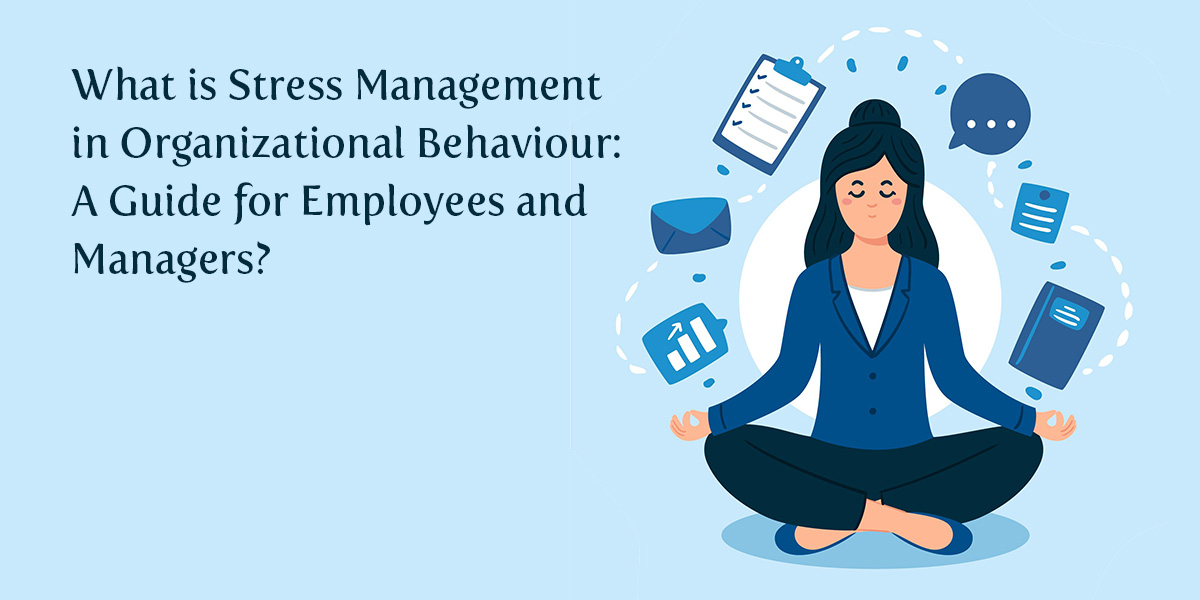What Is Stress Management In Organizational Behaviour?
Stress management in organizational behavior refers to the strategies and techniques employed by individuals, managers, and organizations to identify, prevent, and cope with stress in the workplace. It involves understanding the causes and impact of stress on individuals and organizations, implementing measures to reduce stress levels, and fostering a positive work environment that promotes employee well-being and productivity.
Impact Of Stress On Individuals And Organizations
Stress can have significant effects on both individuals and organizations. Here are some key impacts:
- Decreased productivity and performance
- Increased absenteeism and turnover
- Negative impact on physical and mental health of employees
- Strained relationships and conflicts among team members
- Reduced job satisfaction and engagement
- Increased risk of errors and accidents
Signs And Symptoms Of Stress In Employees And Managers
Recognizing the signs and symptoms of stress is crucial for early intervention and support. Some common indicators of stress in employees and managers include:
- Increased irritability, agitation, or mood swings
- Fatigue, low energy, or sleep disturbances
- Difficulty concentrating or making decisions
- Physical symptoms such as headaches, muscle tension, or digestive issues
- Withdrawal from social interactions or decreased participation
- Increased reliance on substances like alcohol or drugs
Types Of Stress Management In Organizational Behaviour
In organizational behavior, stress management techniques can be categorized into several types:
- Individual-Level Techniques: Focus on helping individuals develop coping skills and resilience through techniques such as time management, prioritization, relaxation exercises, and mindfulness practices.
- Organizational-Level Techniques: Involve implementing policies and practices that promote work-life balance, clear communication, employee recognition, and fostering a supportive work culture.
- Job Redesign and Workload Management: Involves assessing and modifying job roles, responsibilities, and workloads to reduce stress levels. This can include task delegation, workload balancing, and ensuring realistic job demands.
- Training and Development: Providing training programs to enhance employees’ skills, knowledge, and abilities to handle stress effectively, including stress management workshops, communication skills training, and conflict resolution training.
- Employee Support Programs: Offering employee assistance programs (EAPs), counseling services, or access to mental health resources to provide professional support for employees experiencing stress.
Stress Management Techniques In Organizational Behaviour
Effective stress management techniques can significantly contribute to employee well-being and organizational success. Here are some techniques commonly used in organizational behavior:
- Time Management: Encouraging employees to prioritize tasks, set realistic deadlines, and manage their time efficiently to reduce work-related stress.
- Regular Communication: Promoting open and transparent communication channels to address concerns, provide feedback, and ensure employees feel heard and supported.
- Work-Life Balance: Encouraging a healthy balance between work and personal life by promoting flexible working hours, remote work options, and paid time off.
- Health and Wellness Initiatives: Implementing wellness programs, fitness activities, and providing access to resources that support physical and mental health.
- Conflict Resolution: Training employees and managers on conflict resolution techniques to address conflicts in a constructive and collaborative manner.
- Supportive Leadership: Fostering a supportive leadership style that promotes trust, recognition, and empathy, creating a positive work environment.
Remember, stress management techniques should be tailored to the specific needs of the organization and its employees, considering the nature of work, industry, and individual circumstances.
Related Blog: How Can We Manage Stress at Workplace? 15 Simple Ways to Manage Stress at Work!
The Role Of Employees In Stress Management
Employees play a vital role in managing and reducing stress in the workplace. Here are some key ways employees can contribute to stress management:
- Self-Awareness: Recognizing their own stress levels, triggers, and signs of burnout, and taking proactive steps to manage their stress through self-care practices and seeking support when needed.
- Time Management: Employing effective time management techniques to prioritize tasks, set realistic deadlines, and avoid unnecessary work overload.
- Work-Life Balance: Striving to maintain a healthy balance between work and personal life, setting boundaries, and taking time off to recharge and rejuvenate.
- Communication: Expressing concerns, challenges, and work-related issues with managers or colleagues in a respectful and constructive manner, seeking assistance or collaboration when required.
- Seeking Support: Utilizing available resources such as employee assistance programs, counseling services, or support groups provided by the organization to address stress and seek professional help when necessary.
The Role Of Managers In Stress Management
Managers play a crucial role in creating a supportive work environment and promoting stress management among their team members. Here are some ways managers can contribute to stress management:
- Open Communication: Encouraging open and transparent communication channels, actively listening to employee concerns, and providing timely feedback and guidance.
- Workload Management: Ensuring that workloads are reasonable and balanced among team members, avoiding excessive or unrealistic expectations, and offering assistance or reallocating tasks as needed.
- Clear Expectations: Setting clear performance expectations, providing clarity on roles and responsibilities, and ensuring employees have the necessary resources and support to meet their objectives.
- Empathy and Support: Demonstrating empathy, understanding, and support towards employees experiencing stress, providing a safe space for them to express their concerns and offering assistance or accommodations when possible.
- Recognition and Appreciation: Recognizing and appreciating employees’ efforts and achievements, celebrating milestones, and fostering a positive work culture that promotes a sense of belonging and job satisfaction.
The Bottom Line
Effective stress management is essential for the well-being and productivity of individuals and organizations. By implementing stress management strategies at both the individual and organizational levels, employees and managers can create a healthier work environment, reduce stress-related issues, and enhance overall job satisfaction and performance. It is a shared responsibility that requires collaboration, open communication, and a commitment to prioritizing employee well-being. By proactively addressing stress and fostering a supportive workplace culture, organizations can create an atmosphere where individuals thrive, leading to increased engagement, productivity, and success.









Post a Comment